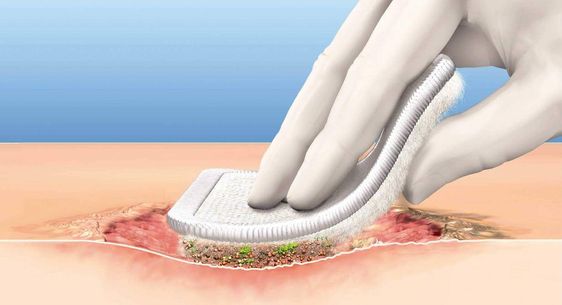During the wound healing process, choosing the right dressing is crucial to promote wound recovery and reduce the risk of infection. Many patients are often confused about how to choose the appropriate dressing for wounds that have not had their sutures removed. Today, we will discuss whether hydrocolloid dressings can be used on wounds that have not had their sutures removed.

What are hydrocolloid dressings?
Hydrocolloid dressing is a dressing that absorbs wound secretions and keeps the wound moist. Its main feature is that it can form a soft protective film to effectively isolate external bacteria and create a good healing environment for wounds. At the same time, hydrocolloid dressings can also reduce wound pain and relieve patient discomfort.
Can hydrocolloid dressings be used on wounds that are not sutured?
The answer is yes, it can play the following roles:
1. Protect the wound
Hydrocolloid dressings adhere closely to the wound and form an effective protective layer to prevent bacteria and other contaminants from entering, thereby reducing the risk of infection.
2. Promote healing
Hydrocolloid dressings can keep wounds moist, which is conducive to cell proliferation and the formation of granulation tissue. At the same time, a moist environment can also promote the dissolution of fibrin and accelerate the wound-healing process.
3. Reduce pain
The softness and conformability of hydrocolloid dressings can reduce wound pain and improve patient comfort. In addition, it can also reduce the friction between the wound and clothing, further alleviating the patient's discomfort.
For wounds that have not had their sutures removed :
1. Choose the right size
When selecting a hydrocolloid dressing, the appropriate size should be selected based on the size and shape of the wound to ensure that the dressing can completely cover the wound and fit tightly.
2. Replace regularly
Hydrocolloid dressings gradually absorb wound secretions during use and therefore need to be changed regularly to maintain their cleanliness and effectiveness. Generally speaking, it is recommended to change it once a day or at an appropriate time according to the wound condition.
3. Observe the wound condition
During the use of hydrocolloid dressings, patients should closely observe the wound condition. If symptoms such as redness, swelling, increased pain, or abnormal secretions occur, they should seek medical examination in time.

Wounds that are not sutured can usually be treated with hydrocolloid dressings. Hydrocolloid dressings can create a good healing environment for the wound, promote the wound-healing process, and reduce the patient's pain. However, you also need to pay attention to choosing the right size, changing it regularly, and closely observing the wound condition during use. I hope this article can provide a useful reference for the majority of patients and promote smooth wound healing. For more information on Innomed® Hydrocolloid Dressing, refer to the previous articles. If you have customized needs, you are welcome to contact us; we will serve you wholeheartedly.
At Longterm Medical, we transform this data by innovating and developing products that make life easier for those who need loving care.
Editor: kiki Jia

 English
English عربى
عربى Español
Español русский
русский 中文简体
中文简体








